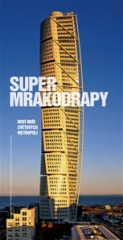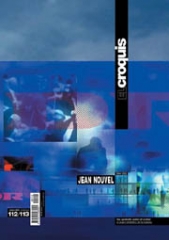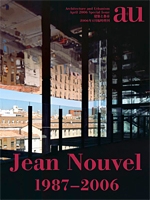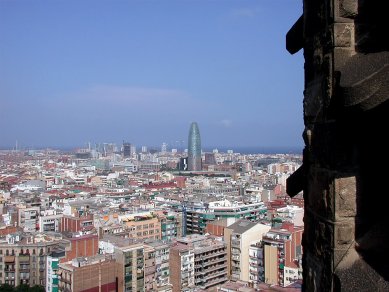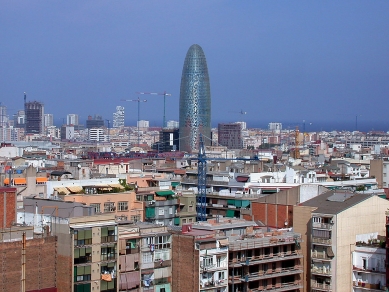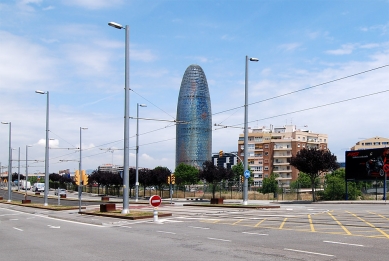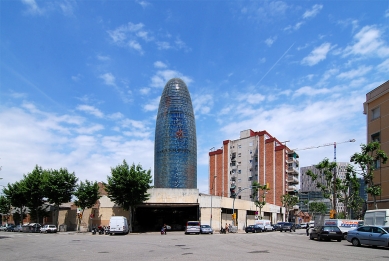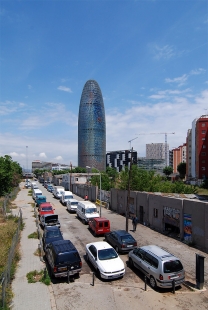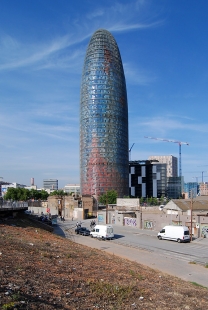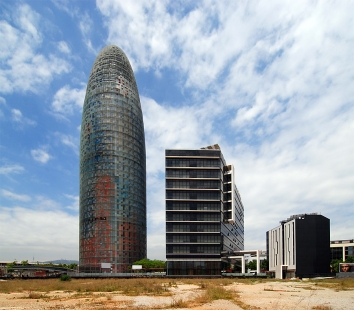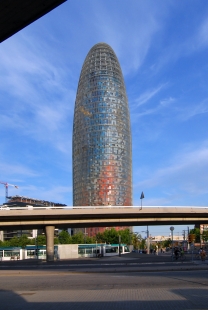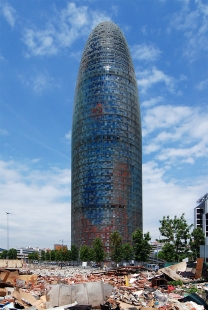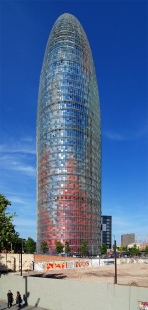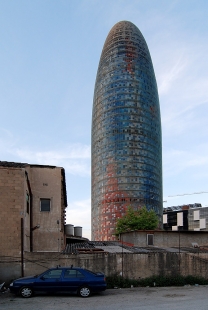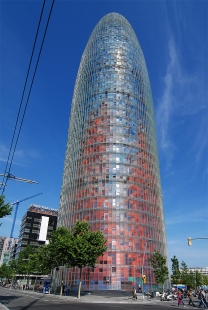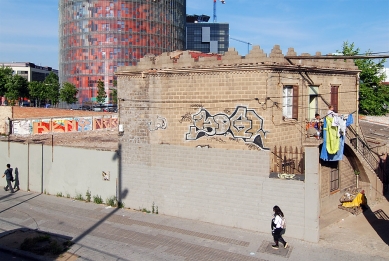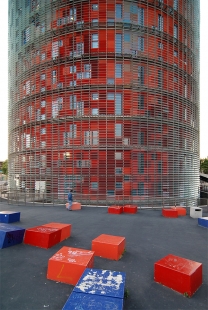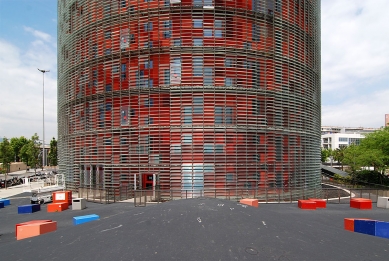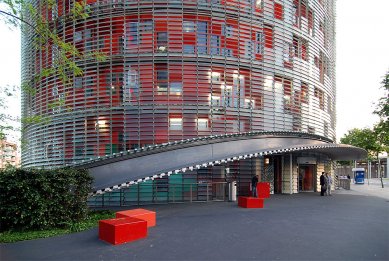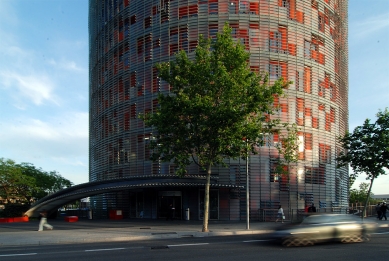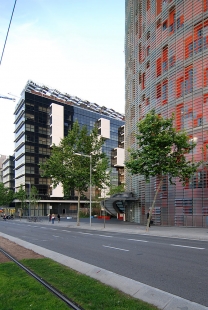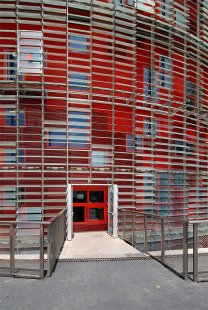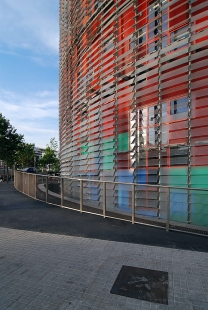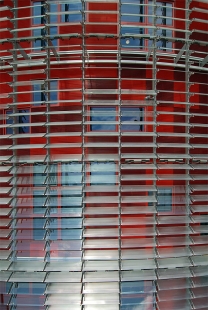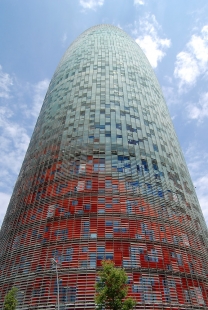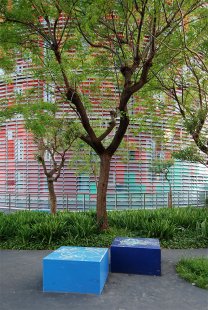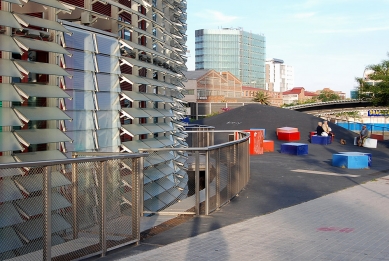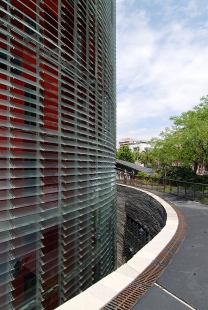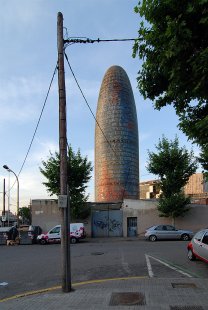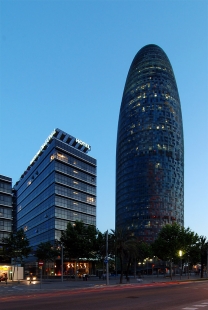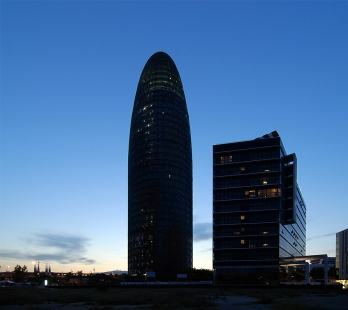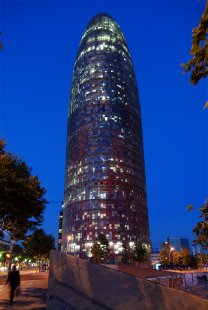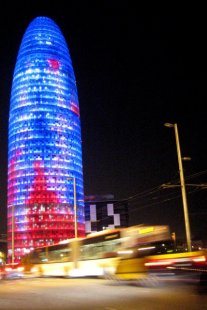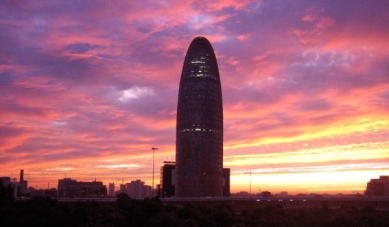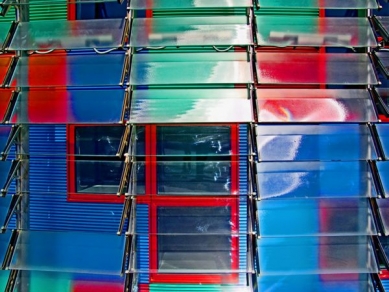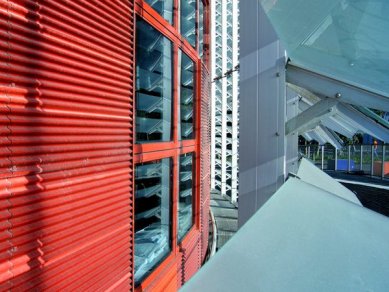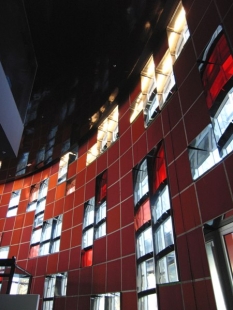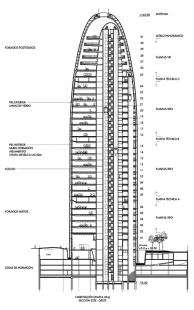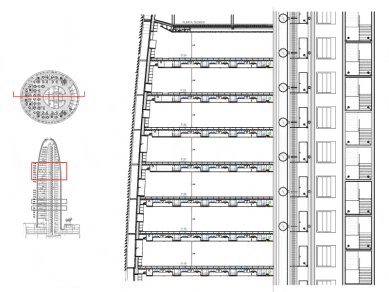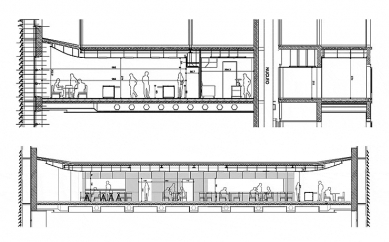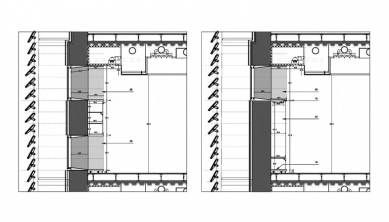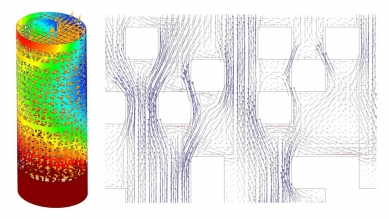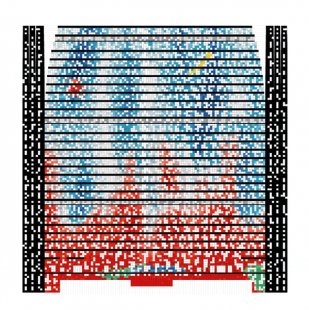
Torre Agbar

“This is not a tower or skyscraper as understood in the American sense. Agbar is more of an unusual formation emerging from the urban grey. Just as towers and bell towers pierce the horizontal horizon of cities, this structure looks like a liquid mass flowing from the ground like a geyser under constant pressure.”
The surface of the building resembles water: smooth and continuous, translucent and shiny, revealing the materials used in shades of colors and lights. It is an architecture of earth without the heaviness of stone, like a distant echo of an old Catalan fixation on form, brought by the mysterious breath from Montserrat.
The ambiguity of light and material used in Torre Agbar resonates in the silhouette of Barcelona both day and night, similar to the unusual reflection marking the entrance to the building from the diagonal street leading from Plaça de les Glòries. This peculiar object will become a new symbol and the best ambassador of Barcelona as an international city.” J. Nouvel
The ambiguity of light and material used in Torre Agbar resonates in the silhouette of Barcelona both day and night, similar to the unusual reflection marking the entrance to the building from the diagonal street leading from Plaça de les Glòries. This peculiar object will become a new symbol and the best ambassador of Barcelona as an international city.” J. Nouvel
Torre Agbar is the new headquarters of Barcelona's water company - Aguas de Barcelona (AgBar) - and thus the name of the building originates from its shape, which is intended to resemble a geyser shooting from the ground. The developer, who owns the land, approached three architectural firms in 2000 (b720, RPBW, AJF). Of the proposed designs, he was most attracted to Jean Nouvel's project. Fermín Vázquez from the local b720 studio was not left out, however. His office closely collaborated on the Torre Agbar project, leading to further cooperation on the Reina Sofía Museum in Madrid. Vázquez's name has become so widely known that today architects such as Toyo Ito and David Chipperfield work with him on their Spanish projects.
The skyscraper does not rest classically on the ground but rises from something that the architects called a 'crater,' filled with half a meter of water. The term crater is appropriate as the building is surrounded by a wavy lunar landscape of asphalt. The footprint profile is not circular. It consists of an oval with an eccentrically positioned concrete core. The space between the core and the concrete outer shell is column-free. Workers needed five days to cast one floor. From the ground to the 14th floor, the building is vertical; from the 14th to the 25th floor, the building begins to curve, and the outer supporting shell between the 26th and 32nd floors forms a steel dome. The entire building is wrapped in 59,619 glass blinds. Some are transparent, others only translucent, and others are printed with a pattern of black dots. Their random distribution on the façade creates the illusion that they can be adjusted, which unfortunately is not true. Among the disadvantages of the building are low ceilings, small scattered windows measuring 90x90 cm, and relatively little light that struggles to penetrate through the thick double shell. An advantage is the use of so-called low-tech: due to the thick concrete outer walls, air conditioning was not needed in the building, and other cheap energy-saving measures were implemented.
Although the new headquarters of the water company is the third largest building in the city (the first is Gaudí's Sagrada Familia at 170 meters and the second is the 154-meter-high twins by SOM in the 1992 Olympic village), it incredibly dominates its surroundings. The strength of the building is expected to weaken in the coming years. Plaça de les Glòries Catalanes will slowly fill with other office buildings, which, however, will not reach the same height as Torre Agbar.
A formal comparison arises with a similar tower a year older by Norman Foster in London. Swiss Re is, however, the result of rational thinking, a close connection between structure and building, and nature-preserving solutions. The overall design of “Foster's cucumber” plays a significant role, but just like “Nouvel's bird,” which is not logical, clear, or repeatable. It is more like an artist's gesture, infused with the story of the place.
The skyscraper does not rest classically on the ground but rises from something that the architects called a 'crater,' filled with half a meter of water. The term crater is appropriate as the building is surrounded by a wavy lunar landscape of asphalt. The footprint profile is not circular. It consists of an oval with an eccentrically positioned concrete core. The space between the core and the concrete outer shell is column-free. Workers needed five days to cast one floor. From the ground to the 14th floor, the building is vertical; from the 14th to the 25th floor, the building begins to curve, and the outer supporting shell between the 26th and 32nd floors forms a steel dome. The entire building is wrapped in 59,619 glass blinds. Some are transparent, others only translucent, and others are printed with a pattern of black dots. Their random distribution on the façade creates the illusion that they can be adjusted, which unfortunately is not true. Among the disadvantages of the building are low ceilings, small scattered windows measuring 90x90 cm, and relatively little light that struggles to penetrate through the thick double shell. An advantage is the use of so-called low-tech: due to the thick concrete outer walls, air conditioning was not needed in the building, and other cheap energy-saving measures were implemented.
Although the new headquarters of the water company is the third largest building in the city (the first is Gaudí's Sagrada Familia at 170 meters and the second is the 154-meter-high twins by SOM in the 1992 Olympic village), it incredibly dominates its surroundings. The strength of the building is expected to weaken in the coming years. Plaça de les Glòries Catalanes will slowly fill with other office buildings, which, however, will not reach the same height as Torre Agbar.
A formal comparison arises with a similar tower a year older by Norman Foster in London. Swiss Re is, however, the result of rational thinking, a close connection between structure and building, and nature-preserving solutions. The overall design of “Foster's cucumber” plays a significant role, but just like “Nouvel's bird,” which is not logical, clear, or repeatable. It is more like an artist's gesture, infused with the story of the place.
The English translation is powered by AI tool. Switch to Czech to view the original text source.
27 comments
add comment
Subject
Author
Date
Pohádka
Sigmund Freud
18.01.06 02:25
Výtečná stavba
Daniel John
18.01.06 02:10
...Je to mrdka z krtka (7:- P)
šakal
18.01.06 11:37
Pokuta
Jan Kratochvíl
19.01.06 12:58
(7;- ))
šakal
19.01.06 08:25
show all comments


